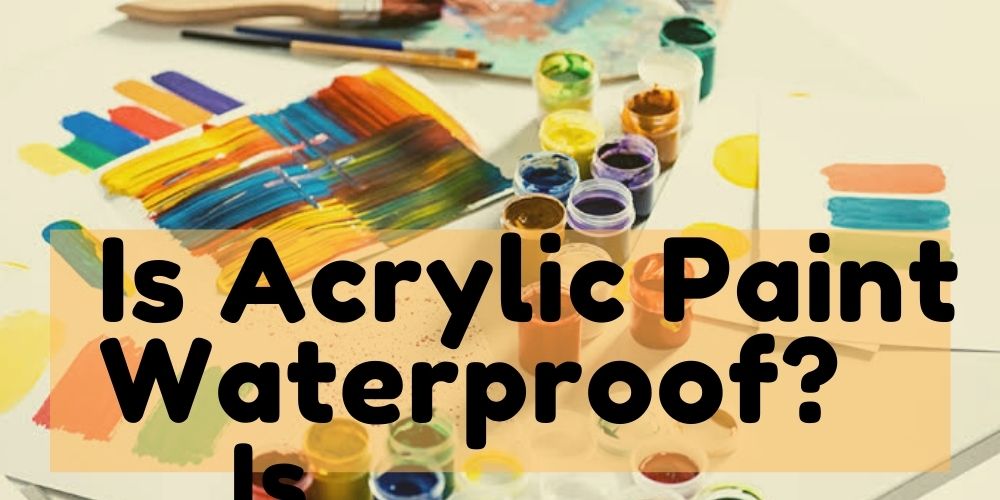Acrylic is ideal for crafting, collage, and multi work due to its durability, longevity, adhesive properties, and chemical stability. However after every artwork is finished cleaning and discarding the acrylic paint is also a toll of a task.
You may have the query, is acrylic paint recyclable? Well, most of them is recyclable and reusable. But, there is a catch as well, but for that you will have to read the entire article, as I have explained about it later in this article.
If your acrylic paint is toxic in nature you need to contact a local hazardous waste center nearby. Just make sure to dry it properly before dumping it.
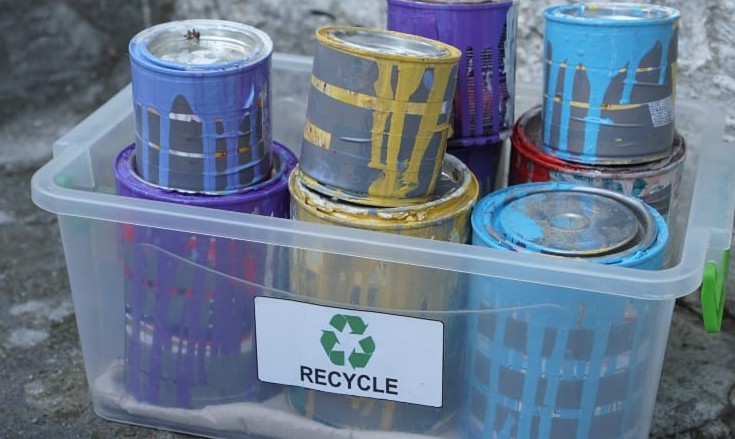
But before disposing of the acrylic paint you must check whether your paint is recyclable or not? Some acrylic paint is non-toxic and reusable. Whenever you send it to a collection point, they will check and filter it to ensure it meets quality levels.
They’ll then blend it with some other paints of comparable shade and substance to make recycled paint for someone else to use.
It’s worth noting that not all recycling centers take paint. Contact a local center to see whether they accept non-toxic acrylic paint for disposal. We’ll talk about whether acrylic paints are recyclable in this article to provide you with some insight into the subject.
Is acrylic environmentally friendly?
Even if they aren’t harmful, acrylic acrylics aren’t called environmentally friendly because they include a range of toxic metals and other harmful byproducts. These are dangerous not just to mankind, but also to wildlife and the atmosphere.

Now the question arises: is acrylic paint biodegradable? The reply is a little more detailed. Since the paint contains a petroleum-based polymer, it is not biodegradable. All acrylic paints can be hazardous if consumed in large quantities.
Non biodegradable Acrylic paints involve a variety of pollutants, even if they aren’t lethal. You wouldn’t want to throw it away or rinse it down the drain. Acrylics are a threat to health and the environment, so it’s necessary to dispose of acrylic paint carefully.
Is Acrylic Paint Recyclable?
Most Acrylic paint is non-hazardous and recyclable. I did research on recycling facilities and whether they genuinely discard and make the paint reusable to protect the environment and the people around you.
Whenever you deliver it to a recycling center, they will inspect and purify it to verify that it meets benchmarks. They’ll simply mix it with other pigments of identical tint and quality to make recycled paint for everybody to reuse.
But Some of the acrylic paints comprise plastic elements like polycarbonate and therefore are not recyclable.
Start contributing your spare tub full of acrylic paint to a charity that can use it if you would like to pursue another method for recycling it. You might just be able to contribute it to your nearby Habitat for Society store or donate it to an art class at a local school. Contribute it to an art group or drama program at your local school, or a performing arts group.
Acrylic paint is sometimes accepted and reserved by local recycling facilities. It will then be handed to those in need. The optimal solution for you is determined by how much acrylic you have left and whether it is harmful to the surroundings.
Things to consider before recycling acrylic paint
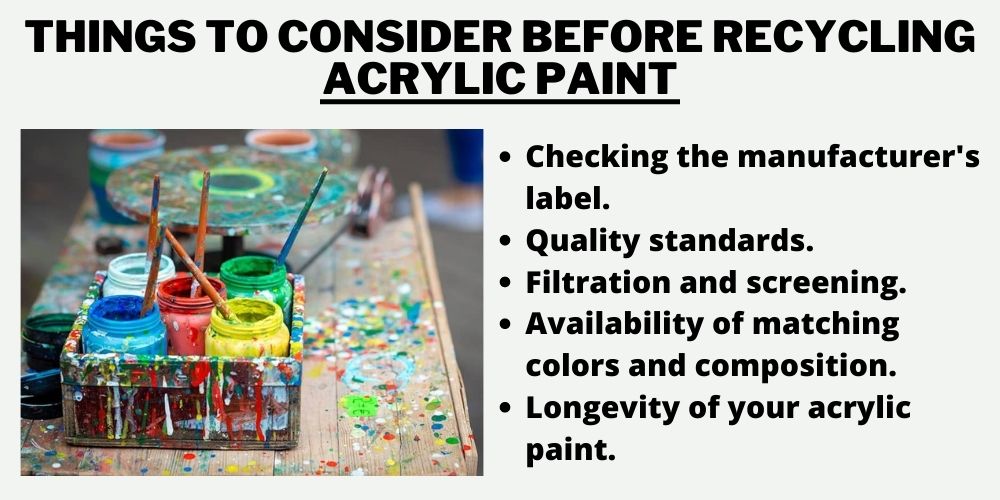
Checking the manufacturer’s label
You need to check out the label of acrylic paint packaging to find out the toxicity level of your paint.Generally recycling facilities don’t accept toxic or hazardous paint.
Resin, agent, tint, and chemicals are the four key phases of most acrylic paints. Acquire a Safe Work Procedures form from the shop when purchasing acrylic paint to determine the dangerous chemicals. The key ingredient is epoxy, which produces a layer or coating on the painted surface.
Linseed, adhesive, or other polyesters are examples of non-hazardous components. The solvent preserves the paint in a fluid form until the coating is applied and the solvent evaporates.
Oil-based acrylic paints are not recyclable as they contain dangerous chemicals such as mineral spirits and xylene, which are generated from petroleum extraction.
Color and gloss, or covering power, are provided by pigments. These are the most commonly used pigments today: iron oxide, titanium oxide, calcium sulfate, silicates, and clay. These colors are low in toxicity.
Heavy metals, including chromium, arsenic, and cadmium, may be found in some brightly coloured acrylic paints. The additives’ content might vary, and they can include both toxic and non-toxic chemicals.
Quality standards
Sometimes best quality acrylic paints might be toxic in nature. The leftover paints which are in good quality and condition could go for recycling smoothly. So many recycling centers make sure that the acrylic paint suits their quality standards for a trouble free recycling process..
Acrylic paints are available in two grade levels: artist class and student class. Artists’ grade paints with high durability (sometimes known as “expert”) are available in a wide spectrum of hues, include a heavy amount of finely milled pigments and harmful metals hence more toxic in nature,
Students’ colors are less expensive, but they come with a restricted selection, lower pigment levels so less toxic than artist grade. But the presence of additives might impair the color’s power and non toxic nature of the paint.
Filtration and screening: how do you filter acrylic paint?
Different recycling facilities use different techniques to screen or filter the acrylic paint to make sure it’s satisfying their recyclable benchmark.
You can either use a standard coffee filter or purchase the bigger ones that are used in professional Bunn equipment. However, you may glue these up to the jar and put your acrylic paint into it through the sieve. The paint solids will be removed from the acrylic paint by the filter.
Availability of matching colors and composition
The recycling paint waste facilities mainly accept the colors for which they have a similar color and composition match in their stock.
Even after the acrylic paints have been set, some acrylic paints allow for color adjustment. Glazing is a way of accomplishing this. This allows for the reuse of leftover colors. Colors in dry acrylic paints are more closely related to their wet forms, making matching easier.
A mix of cool and warm primaries provides enough variety to match almost any color. Using the basics speeds up the process and is crucial to mastering color control.
Preserve titanium white and resist bringing any black to the centers, aside from these primary hues. Because black has the darkest pigment, it cannot be mixed with other colors.
Longevity of your acrylic paint
Expired, spoiled or age old paint can’t be recycled so properly examine your acrylic paint expiry date before bringing the paints in recycle facilities. Acrylic paints that have a water base have a 10-year lifespan, while oil-based acrylics have a 15-year life span.
Acrylic paints are polymerized before they are used to make paint, so no more chemical processes are required to generate a film. However, acrylic films that have been painted have recently been discovered to be milder, more elastic, and less rigid than oil-painted films.
Acrylic films can harden as they age due to chemical effects. However, these variations are very slow when the paint is maintained inside.
What can you do with extra acrylic paint?
Nothing comes close to the allure of tie-dye. Simply temper the acrylic paint and place it in squirt tubes. Then, much like with regular linen dye, apply it. Although the shades wouldn’t be as vibrant as with traditional means, it will work!
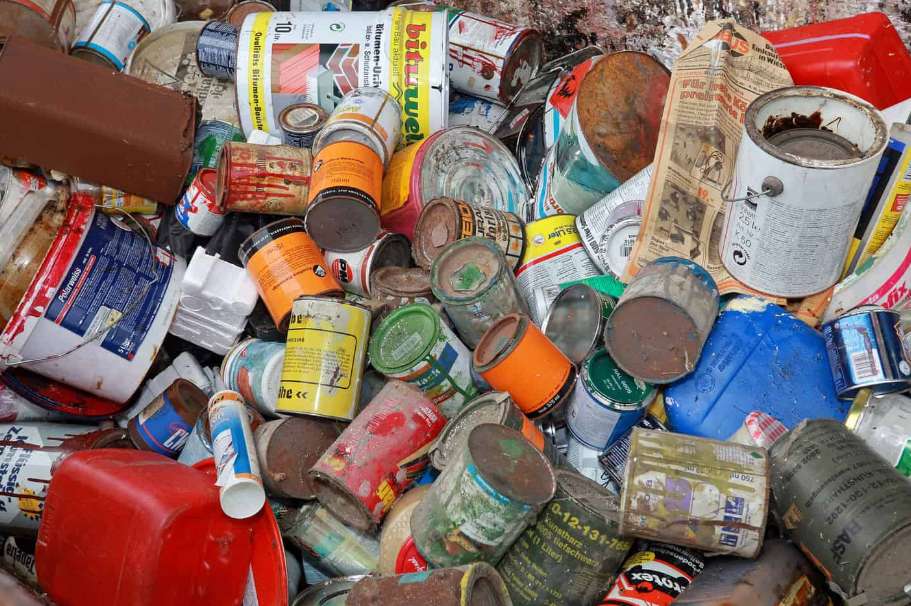
Faux spray paint can be made with acrylic paint. To make the paint run through a squeeze bottle, simply add water.
Making beautiful paper is another fantastic way to utilize paint. For a marbled look, dunk the sheet into tubs filled with various mixtures of watery acrylic paint. You can also moisten the sheet with a squeeze bottle and then color it with watery acrylic paint. In either case, the paint seeps into the paper as it sets, giving a long-lasting impression.
Is acrylic paint made of plastic?
Water-based acrylic paint is made up of tints and minuscule bits of resin composite added to the water (polymeric mix). The epoxy granules fuse as the water dries up, forming a robust, long-lasting paint.
Acrylic paint’s binder consists of acrylic polyester, which forms a layer once the water is absorbed. The portion of the paint that contains the tint and adhesive is referred to as the vehicle. Water is the carrier for water acrylic, and it generates a polymer solution when coupled with the binder. It’s mainly made of plastic, so it’s not biodegradable.
Acrylic paints seem harmless to use in daily artwork, but they must be disposed of properly to avoid harming the environment
Can You Recycle Acrylic Paint Bottles?
Yes You can recycle the acrylic paint bottles. But first properly research about the material of your paint bottle if it is recyclable or not. Not all recycling facilities accept the discarded paint bottles. Make sure to check out the manufacturer’s label to have a better idea whether your local recycling facilities will receive such material for recycling.
If your leftover paints in the bottle are wet, let it dry properly. Then remove the paint from the bottle by rubbing or scraping it by any sharp objects.
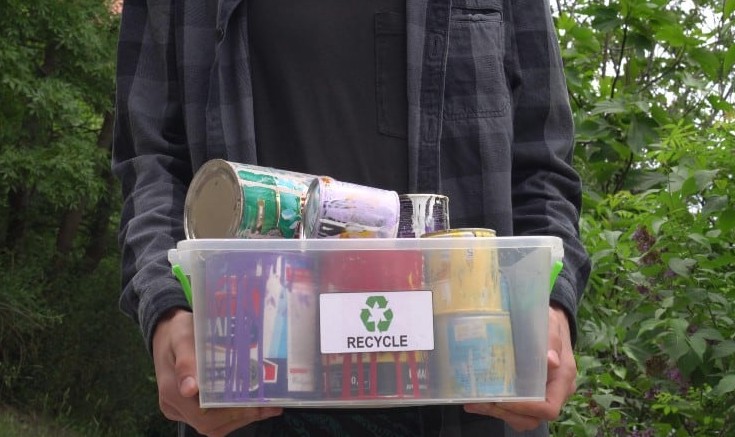
You can also use a thinner like rubbing alcohol to dilute the residual acrylic paint for several hours. Then wash your bottle thoroughly in a bucket filled with water but don’t dispose of the acrylic paint water in the sink.
If you are careful to properly clean your bottle and remove your paint from the bottle completely it doesn’t matter whether your paintof the bottle is toxic or non toxic in nature.
What Easily Removes Acrylic Paint?
Being a water based paint, acrylic paint can be easily removed in wet form. But when the paint is dried it’s not that easy. Even some oil based acrylic paints are very difficult to wash out from the surface. There are several kinds of chemicals available in the market to easily remove the acrylic paint from any surface.

You can use some store bought materials like rubbing alcohol, denatured alcohol, acetone and lacquer thinner to remove the acrylic paint effortlessly.
Sometimes household substances like ammonia solution can be quite helpful in washing the acrylic paint from nonporous surfaces.
conclusion:
Indeed, properly discarding acrylic paint takes some work. You are, however, safeguarding yourself, your home, your animals, and the ecosystem by doing it correctly. Well, you don’t have to get rid of it. Instead, you may share the leftover paint, letting somebody benefit from it. If your town has a facility, you might try to recycle your leftover paint as well.



